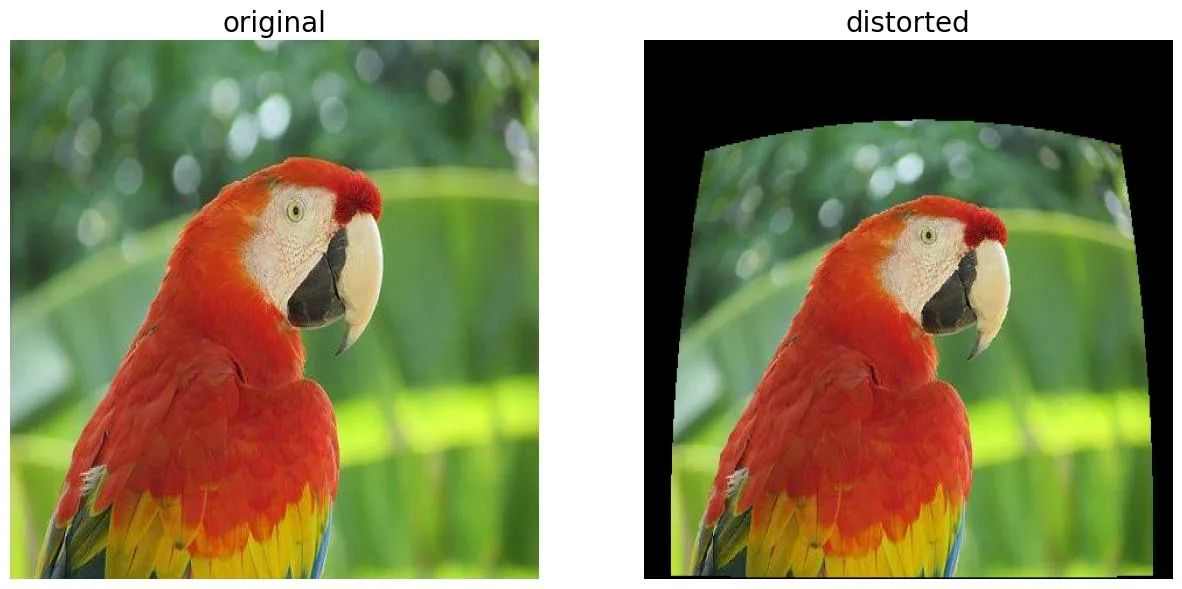使用 cv2.fisheye.distortPoints() 函数,我们可以从源图像的坐标获取目标(畸变)图像的坐标。
如此处和此处所述,"请注意,该函数假设未畸变点的相机矩阵为单位矩阵。这意味着如果您想要通过 undistortPoints() 函数将点转换回未畸变状态,则需要将它们与 P−1 相乘"。
函数 cv2.fisheye.undistortPoints() 接受归一化坐标作为输入,因此我们需要将原始索引乘以相机内部矩阵的逆,如下所示。
需要通过相机标定获得相机内部矩阵 K 和畸变系数 d:
输入的鹦鹉图片可以从
这里获取。
import matplotlib.pylab as plt
import cv2
K = np.array( [[338.37324094,0,319.5],[0,339.059099,239.5],[0,0,1]], dtype=np.float32)
d = np.array([0.17149, -0.27191, 0.25787, -0.08054], dtype=np.float32)
def apply_fisheye_effect(img, K, d):
indices = np.array(np.meshgrid(range(img.shape[0]), range(img.shape[1]))).T \
.reshape(np.prod(img.shape[:2]), -1).astype(np.float32)
Kinv = np.linalg.inv(K)
indices1 = np.zeros_like(indices, dtype=np.float32)
for i in range(len(indices)):
x, y = indices[i]
indices1[i] = (Kinv @ np.array([[x], [y], [1]])).squeeze()[:2]
indices1 = indices1[np.newaxis, :, :]
in_indices = cv2.fisheye.distortPoints(indices1, K, d)
indices, in_indices = indices.squeeze(), in_indices.squeeze()
distorted_img = np.zeros_like(img)
for i in range(len(indices)):
x, y = indices[i]
ix, iy = in_indices[i]
if (ix < img.shape[0]) and (iy < img.shape[1]):
distorted_img[int(ix),int(iy)] = img[int(x),int(y)]
return distorted_img
K = np.array( [[338.37324094,0,319.5],[0,339.059099,239.5],[0,0,1]],dtype=np.float32)
d = np.array([0.17149, -0.27191, 0.25787, -0.08054],dtype=np.float32)
img = plt.imread('parrot.jpg')
img = img / img.max()
distorted_img = apply_fisheye_effect(img, K, d)
plt.figure(figsize=(15,7))
plt.subplot(121), plt.imshow(img, aspect='auto'), plt.axis('off'), plt.title('original', size=20)
plt.subplot(122), plt.imshow(distorted_img, aspect='auto'), plt.axis('off'), plt.title('distorted', size=20)
plt.show()

请注意,上述实现可以通过采样少量点(而不是所有点)并使用插值(例如使用
scipy)来大大加快速度。
